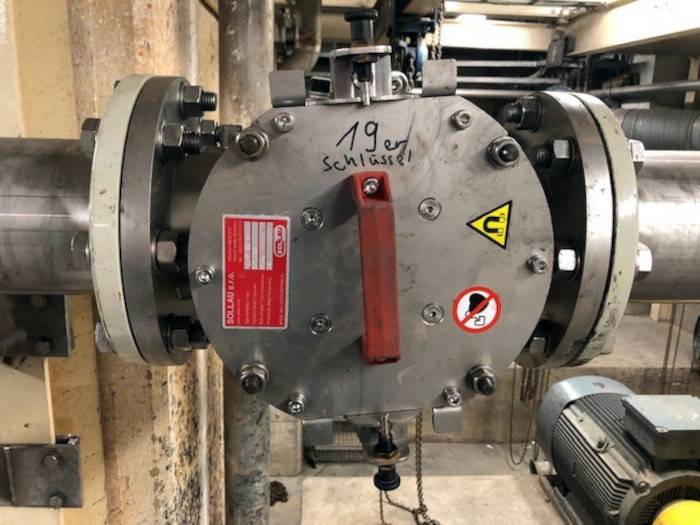4. 1. 2024
Separation of iron wire from cellulose pulp in a paper mill (case study)
Problem
The pulp used in paper-making is delivered in bales fixed with iron wire. When handling the pulp bales, it happens that parts of the wire break off. These wires can then get into the pulp being processed and cause damage to the production equipment.
Solution
The crushed cellulose pulp is a material from which it is very difficult to separate the ferrous particles. Conventional grate magnetic separators quickly become clogged with this material and the separation of the ferrous contaminants is practically impossible. First, it was necessary to find a suitable place in the production process where to place the separator. In addition, to choose such a type of separator which allows to separate metals even from such pulpy and flow resistant materials.
Therefore, we chose a place where the crushed cellulose pulp is transported in a pipeline (DN 150). The inline pneumatic plate magnet ML-P 150 N, equipped with very strong neodymium magnets, was recommended for this application. The advantage of this separator is that the magnetic plates are placed at the inner parts of the separator doors and that is why the material flow is not obstructed.
Wire remains get trapped on the magnetic door. Thanks to using strong neodymium magnets, even very fine ferrous particles can be separated.
Cleaning this separator is very easy, comfortable and safe.
Benefits of using the inline chute magnet ML-P 150
By using the chute magnet ML-P for vacuum and pressure pipes, the ferrous wires and other ferromagnetic contaminants were captured. This reliably eliminated the risk of damage to the downstream equipment, resulting in reduced maintenance and repair costs.
Applied equipment: Chute magnet ML-P 150 N
Advantages of the chute magnet ML-P
- High pull strength
- Heavy-duty stainless steel design
- Pressure resistance up to 10 bar
- Excellent for abrasive and flow resistant materials
- Manual cleaning
- Vertical as well as horizontal installation

